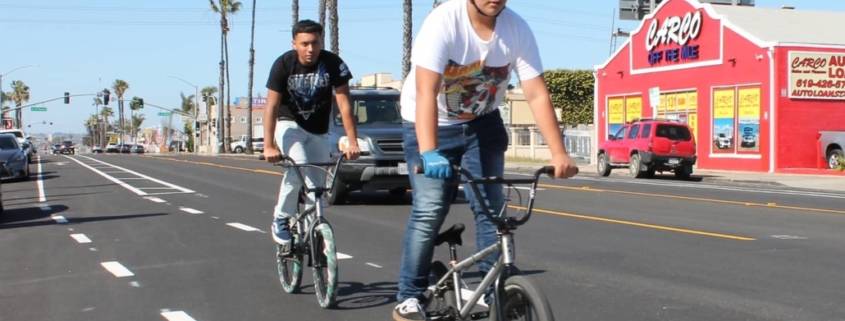CalBike Response to Governor’s ATP Clawback
CalBike is disheartened by Governor Gavin Newsom’s preliminary budget, which claws back almost half of the historic increase to the Active Transportation Program (ATP) of $1.1 billion (some funds were found from elsewhere for a net reduction of $200 million). We understand that a projected $22.4 billion budget shortfall requires cutting expenditures. However, the total transportation budget for 2023-24 is $32 billion, 3% less than the 2022-23 allocation, but even with some of the ATP clawback restored, the program is taking a disproportionate hit with its funding cut by 18%.
The ATP was created in 2013 with a $100 million annual budget. Since then, the annual allocation has more than doubled to around $230 million. However, demand for ATP funds has outstripped the funding from the program’s inception. As communities across California work toward Vision Zero goals and to meet residents’ demands to create more walkable, bikeable neighborhoods, the number and quality of applicants has soared. Even with the boost from last year’s budget and a total of $1.6 billion in Cycle 6, only about one-quarter of the projects from that cycle got funding.
While the governor found replacement funding for $300 million of the $500 million taken out of the program and promises that all the projects approved for grants in Cycle 6 of the Active Transportation Program will get the funding promised to them, the preliminary budget is a worrying sign that California isn’t serious about meeting its climate change goals.
It’s time to stop building freeways
The data is clear: Our climate goals and freeway spending decisions do not align. California’s Strategic Growth Council has asked our decision-makers to address the gap between the vision for a more climate-friendly and equitable transportation system and infrastructure spending decisions. The Council further points out to our state’s decision-makers:
“A significant share of funds at the state, regional, and local levels continue to be spent on adding highway lanes and other projects that increase vehicle travel. This funding not only adds to the maintenance burden of an aging highway system but also means less available funding for other investments that might move more people (such as running more buses or prioritizing their movement) without expanding roadways or inducing additional vehicle travel and provide Californians with more options to meet daily travel needs. Additionally, in most situations, particularly in urban areas, adding highway lanes will not achieve the goals they were intended to solve (such as reducing congestion) as new highway capacity often induces additional vehicle travel due to latent demand that then undermines any congestion relief benefit over time. Critically, these projects also add burdens to already impacted communities along freeway corridors with additional traffic and harmful emissions, and by further dividing and often displacing homes and families in neighborhoods that were segmented by freeways decades prior.”
California Transportation Assessment Report Pursuant to AB 285, California Strategic Growth Council
Early data from 2022 places transportation as the largest emitter of greenhouse gases (GHG), yet the governor’s proposed budget cuts funding for several programs that mitigate climate change while continuing to provide billions for infrastructure projects that will increase GHG emissions.
Californians bear the brunt of climate change. We know what we need to do to mitigate it. Yet the governor’s priorities, as revealed in his draft budget, promise austerity in the areas where we were already spending far too little and maintain funding levels for building and widening climate-destroying freeways.
The $1 billion for bikes in last year’s budget was a good step in the right direction, but it wasn’t enough. CalBike will pursue the following goals in the 2023 budget process:
- Raise ATP funding to 10% of the state’s transportation budget — around $3.2 billion — by transferring funds from transportation projects that don’t align with the state’s climate goals.
- Allocate $50 million for another round of e-bike purchase incentives in 2024
- Set aside $500 million to help communities fund connected active transportation networks that provide viable alternatives to travel by car.
- Restore full funding of all other programs for low- and no-carbon transportation.
More analysis of the budget from an active transportation perspective from Streetsblog.





